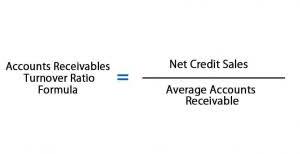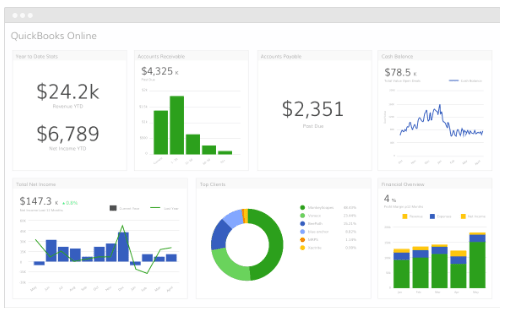
Asset, liability, and most owner/stockholder equity accounts are referred to as permanent accounts (or real accounts). Permanent accounts are not closed at the end of the accounting year; their balances are automatically carried forward to the next accounting year. For this reason the account balance for items on the left hand side of the equation is normally a debit and the account balance for items on the right side of the equation is normally a credit. In addition, it’s important to note the change in the allowance from one year to the next. Because the allowance went relatively unchanged at $1.1 billion in both 2020 and 2021, the entry to bad debt expense would not have been material. However, the jump from $718 million in 2019 to $1.1 billion in 2022 would have resulted in a roughly $400 million bad debt expense to reconcile the allowance to its new estimate.
- Next, let’s explore the relationship between normal balances and the categories of assets, liabilities, and equity in accounting.
- This gives you timely grading information with which to make decisions about your schooling.
- Consider a company that has a single customer that has a material amount of pending accounts receivable.
- The sales method applies a flat percentage to the total dollar amount of sales for the period.
- Now that we have explored the relationship between normal balances and assets, liabilities, and equity, let’s move on to discussing the importance of normal balances in accounting.
These accounts normally have credit balances that are increased with a credit entry. For reference, the chart below sets out the type, side of the accounting equation (AE), and the normal balance of some typical accounts found within a small business bookkeeping system. Because the company may not actually receive all accounts receivable amounts, Accounting rules requires a company to estimate the amount it may not be able to collect. This amount must then be recorded as a reduction against net income because, even though revenue had been booked, it never materialized into cash.
On which side do assets, liabilities, equity, revenues and expenses have normal balances?
In a general ledger, or any other accounting journal, one always sees columns marked “debit” and “credit.” The debit column is always to the left of the credit column. Under this column, the difference between the debit and the credit is recorded. If the debit is larger than the credit, the resultant difference is a debit, and this is listed as a numerical figure. If the credit is larger than the debit, the difference is a credit, and this is recorded as a negative number or, in accounting style, a number enclosed in parenthesis, as for example (500). Thus, if the entry under the balance column is 1,200, this reflects a debit balance. As mentioned, normal balances can either be credit or debit balances, depending on the account type.
At the end of the accounting year the balances will be transferred to the owner’s capital account or to a corporation’s retained earnings account. As noted earlier, expenses are almost always debited, so we debit Wages Expense, increasing its account balance. Since your company did not yet pay its employees, the Cash account is not credited, instead, the credit is recorded in the liability account Wages Payable. When an account has a balance that is opposite the expected normal balance of that account, the account is said to have an abnormal balance. For example, if an asset account which is expected to have a debit balance, shows a credit balance, then this is considered to be an abnormal balance.
Rules of debit and credit
The specific percentage will typically increase as the age of the receivable increases, to reflect increasing default risk and decreasing collectibility. Accrued expenses are not meant to be permanent; they are meant to be temporary records that take the place of a true transaction in the short-term. Every accrued expense must have a reversing entry; without the reversing normal balance of accounts entry, a company risks duplicating transactions by recording both the actual invoice when it gets paid as well as the accrued expense. Because of additional work of accruing expenses, this method of accounting is more time-consuming and demanding for staff to prepare. There is a greater chance of misstatements, especially is auto-reversing journal entries are not used.
- It is essential to consult the accounting framework and relevant standards to determine the normal balances of specific accounts in a particular industry or organization.
- As you see in step 6 of the accounting cycle, we create another trial balance that is adjusted (see The Adjustment Process).
- We go into much more detail in The Adjustment Process and Completing the Accounting Cycle.
- Let’s say there were a credit of $4,000 and a debit of $6,000 in the Accounts Payable account.
- Because no significant period of time has passed since the sale, a company does not know which exact accounts receivable will be paid and which will default.
- Companies regularly make changes to the allowance for credit losses entry, so that they correspond with the current statistical modeling allowances.
So, if a company takes out a loan, it would credit the Loan Payable account. Since cash was paid out, the asset account Cash is credited and another account needs to be debited. Because the rent payment will be used up in the current period (the month of June) it is considered to be an expense, and Rent Expense https://www.bookstime.com/ is debited. If the payment was made on June 1 for a future month (for example, July) the debit would go to the asset account Prepaid Rent. Because no significant period of time has passed since the sale, a company does not know which exact accounts receivable will be paid and which will default.
Reversing Entries
This gives stakeholders a more reliable view of the company’s financial position and does not overstate income. To show how the debit and credit process works within IU’s general ledger, the following image was pulled from the IUIE database. Employees who are responsible for their entity’s accounting activities will see a file such as the one below on more of a day-to-day basis. This general ledger example shows a journal entry being made for the payment (cash) of postage (expense) within the Academic Support responsibility center (RC).

Next, let’s explore the relationship between normal balances and the categories of assets, liabilities, and equity in accounting. When it comes to the world of accounting, maintaining balance is of utmost importance. Every transaction has a corresponding impact on financial statements, and it is crucial to identify the appropriate categories to record these impacts accurately. Understand the concept of normal balance in accounting and its significance in finance. This means when a company makes a sale on credit, it records a debit entry in the Accounts Receivable account, increasing its balance. Conversely, when the company receives a payment from a customer for a previously made credit sale, it records a credit entry in the Accounts Receivable account, decreasing its balance.


